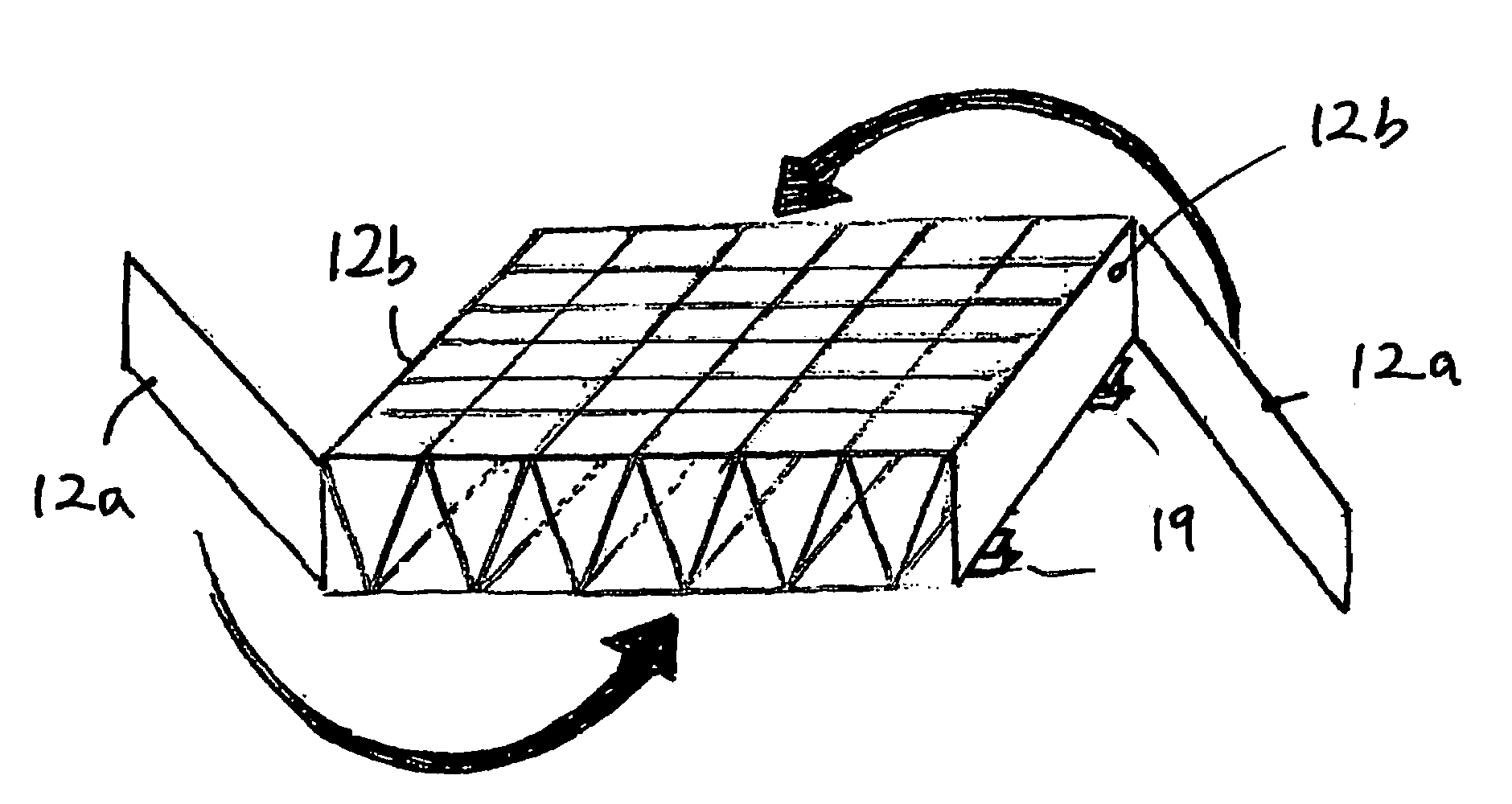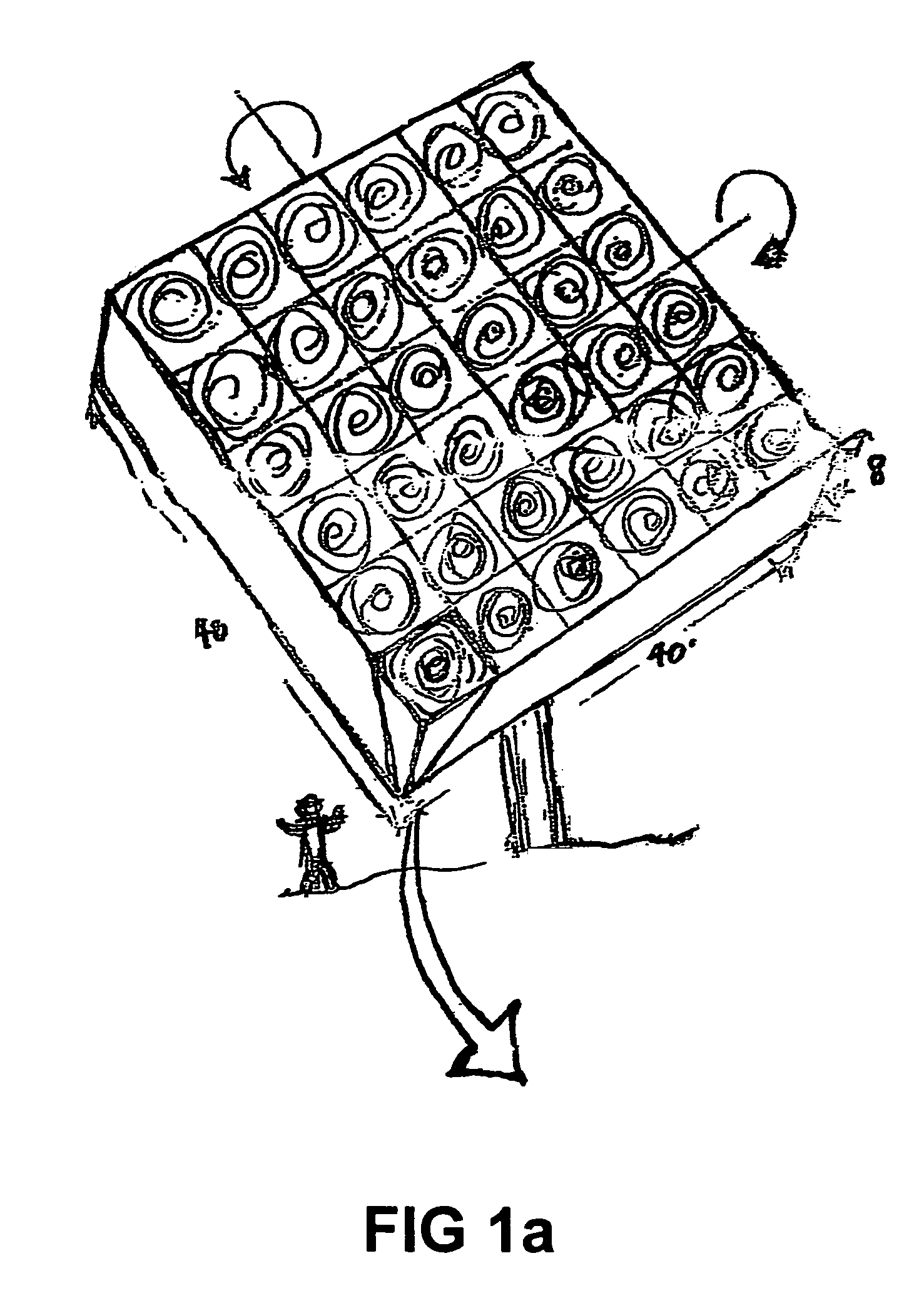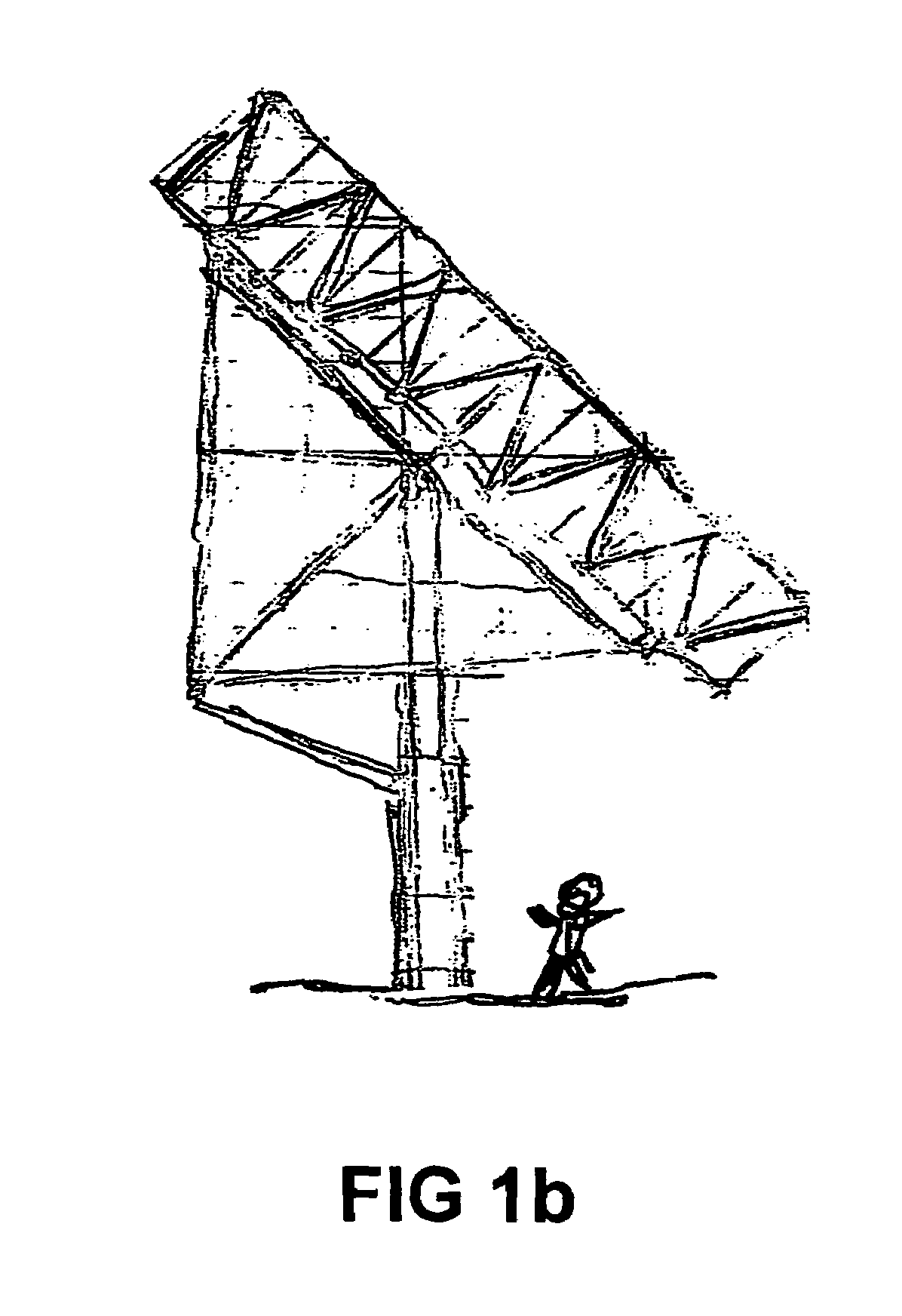Solfire solar concentrator and pointer structure
a solar concentrator and pointer technology, applied in the direction of machines/engines, transportation and packaging, light and heating equipment, etc., can solve the problems of increasing the cost, increasing the difficulty of thermal management of waste heat, and increasing the cost. , to achieve the effect of reducing costs, reducing costs, and eliminating some of the costs associated
- Summary
- Abstract
- Description
- Claims
- Application Information
AI Technical Summary
Benefits of technology
Problems solved by technology
Method used
Image
Examples
Embodiment Construction
[0044]The SOLFIRE 36 kW array illustrated in the following descriptions has 36 lenses and 36 PV cell receivers in a 40 ft×40 ft square array structure 11 8 ft deep as shown in FIGS. 1a (perspective view) and 1b (side view). FIG. 1c is a blow up of on of the 36 cells that make up the array. The lenses and receivers are held in place by a tetrahedral substructure, hereafter referred to as the Modular Cell, MC. FIG. 1c shows the MC as a inverted tetrahedral structure with the base formed by four 2 meter (6.6 ft) long pipes 1 (1″ galvanized pipe), connected at each corner 2 with four 2.66 meter (8.25 ft) long pipes 3 forming the sides of the inverted tetrahedron, joined together at the apex 4, providing a very stabile platform for the PV receiver 5. The receiver is located at the focal point of the flat Fresnel lens 6 contained in the base of the tetrahedron. The dotted lines 7 indicate sites where the MC is connected into the larger array structure.
[0045]FIG. 1d shows an open frame ver...
PUM
 Login to View More
Login to View More Abstract
Description
Claims
Application Information
 Login to View More
Login to View More - R&D
- Intellectual Property
- Life Sciences
- Materials
- Tech Scout
- Unparalleled Data Quality
- Higher Quality Content
- 60% Fewer Hallucinations
Browse by: Latest US Patents, China's latest patents, Technical Efficacy Thesaurus, Application Domain, Technology Topic, Popular Technical Reports.
© 2025 PatSnap. All rights reserved.Legal|Privacy policy|Modern Slavery Act Transparency Statement|Sitemap|About US| Contact US: help@patsnap.com



